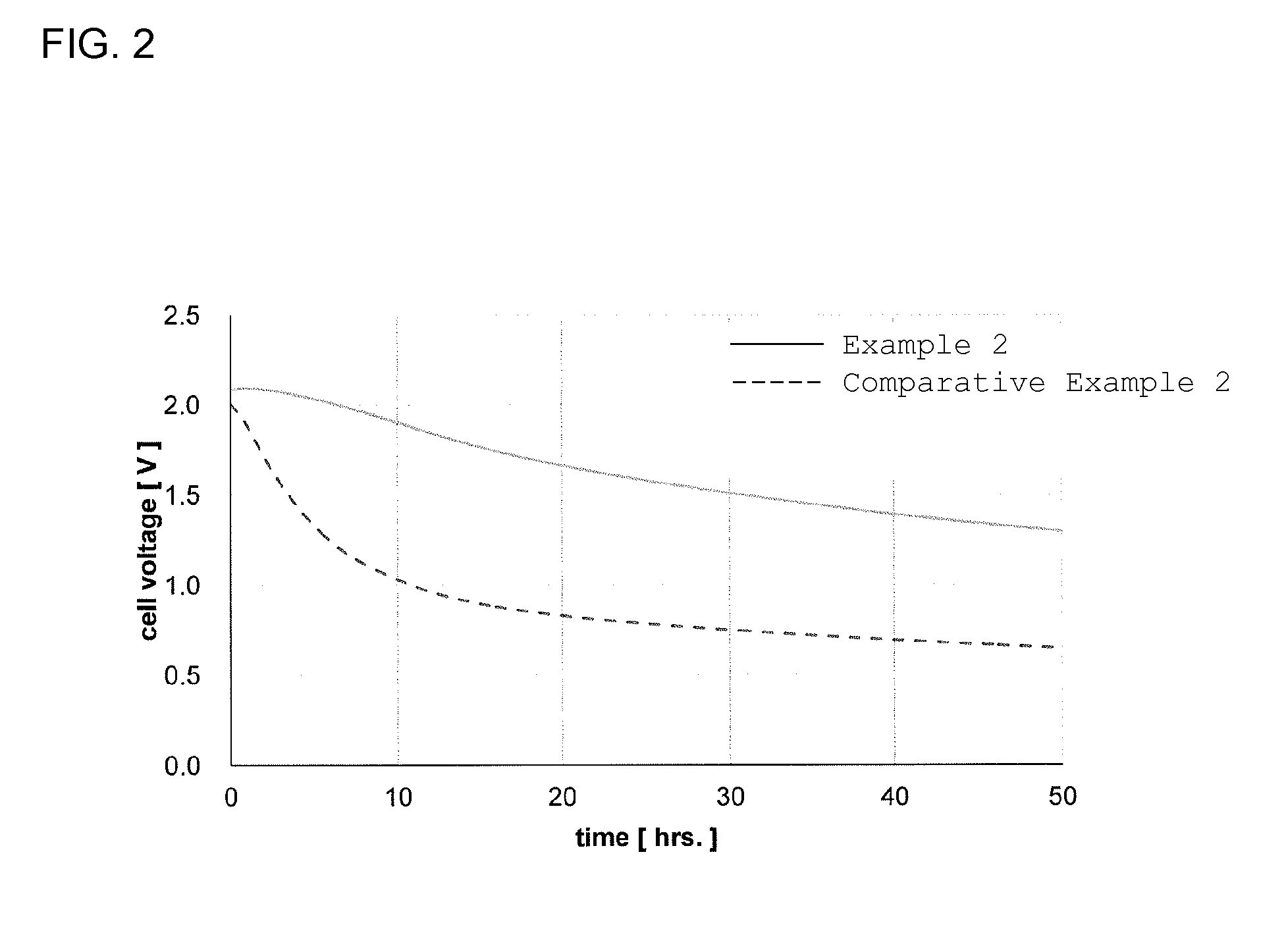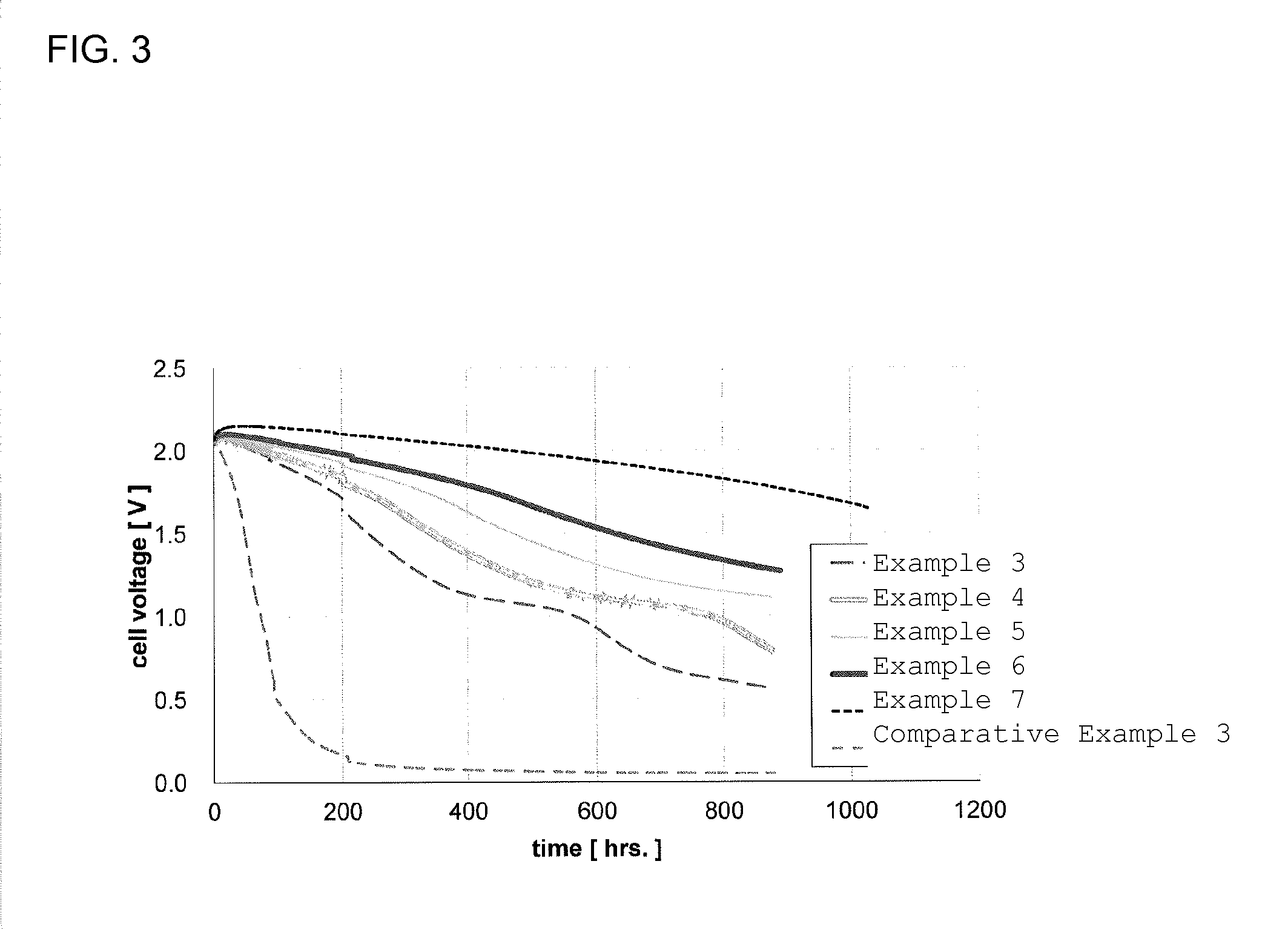Nonaqueous electrolyte secondary battery and method for manufacturing same
a technology of nonaqueous electrolyte and secondary batteries, which is applied in the direction of batteries, sustainable manufacturing/processing, cell components, etc., to achieve excellent weight energy density, improve weight energy density, and improve weight energy density
- Summary
- Abstract
- Description
- Claims
- Application Information
AI Technical Summary
Benefits of technology
Problems solved by technology
Method used
Image
Examples
example 1
Production of Laminate Cell
[0090]A stacked component was assembled using the positive electrode I, the negative electrode and the separator. Specifically, the positive electrode I, the separator and the negative electrode were stacked so as to dispose two sheets of the separators between the positive electrode I and the negative electrode to provide a stacked component. The stacked component was put in an aluminum laminate package, and dried in vacuum at 80° C. for 2 hours in a vacuum dryer. Then, an electrolyte solution was poured into the vacuum dried package. As this electrolyte solution, a solution, which was obtained by adding 2 parts by weight of vinylene carbonate (VC) as the additive for an electrolyte solution to 100 parts by weight of the electrolyte solution i prepared above, was used. Finally, the package was sealed, whereby a nonaqueous electrolyte solution secondary battery of Example 1 was provided. The electrolyte solution was poured into the package in a glove box i...
examples 2 to 16
, Comparative Examples 1 to 5
[0091]The kinds of the positive electrode, the electrolyte solution and the additive for an electrolyte solution, as well as the additive amount of the additive for an electrolyte solution (a negative electrode film-forming agent) were changed to those shown in Tables 1 to 5. Laminate cells (nonaqueous electrolyte secondary batteries) were produced in the same manner as in Example 1 except for the aforementioned conditions.
[0092]A weight energy density was measured in accordance with the following criterion on each of the nonaqueous electrolyte secondary batteries of the inventive examples and the comparative examples thus obtained. The results of the measurement are shown together in Tables 1 to 5.
>
[0093]The nonaqueous electrolyte secondary batteries are each allowed to stand still in a thermostat chamber kept at 25° C. By means of a battery charge / discharge device (SD8 manufactured by Hokuto Denko Corporation), measurement is performed in a constant cu...
PUM
| Property | Measurement | Unit |
|---|---|---|
| thickness | aaaaa | aaaaa |
| thickness | aaaaa | aaaaa |
| diameter | aaaaa | aaaaa |
Abstract
Description
Claims
Application Information
 Login to View More
Login to View More - R&D
- Intellectual Property
- Life Sciences
- Materials
- Tech Scout
- Unparalleled Data Quality
- Higher Quality Content
- 60% Fewer Hallucinations
Browse by: Latest US Patents, China's latest patents, Technical Efficacy Thesaurus, Application Domain, Technology Topic, Popular Technical Reports.
© 2025 PatSnap. All rights reserved.Legal|Privacy policy|Modern Slavery Act Transparency Statement|Sitemap|About US| Contact US: help@patsnap.com



